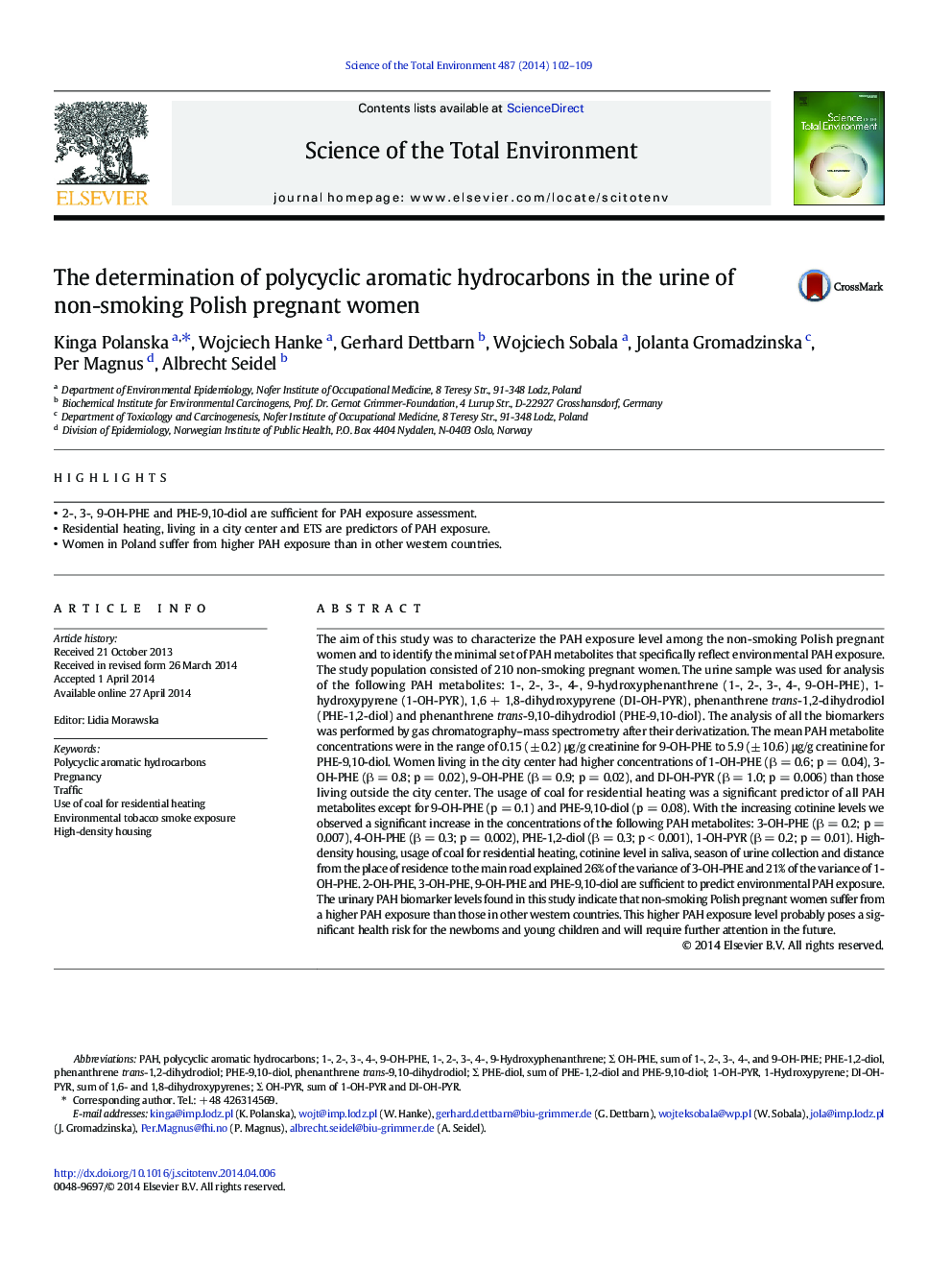| Article ID | Journal | Published Year | Pages | File Type |
|---|---|---|---|---|
| 6329901 | Science of The Total Environment | 2014 | 8 Pages |
Abstract
The aim of this study was to characterize the PAH exposure level among the non-smoking Polish pregnant women and to identify the minimal set of PAH metabolites that specifically reflect environmental PAH exposure. The study population consisted of 210 non-smoking pregnant women. The urine sample was used for analysis of the following PAH metabolites: 1-, 2-, 3-, 4-, 9-hydroxyphenanthrene (1-, 2-, 3-, 4-, 9-OH-PHE), 1-hydroxypyrene (1-OH-PYR), 1,6 + 1,8-dihydroxypyrene (DI-OH-PYR), phenanthrene trans-1,2-dihydrodiol (PHE-1,2-diol) and phenanthrene trans-9,10-dihydrodiol (PHE-9,10-diol). The analysis of all the biomarkers was performed by gas chromatography-mass spectrometry after their derivatization. The mean PAH metabolite concentrations were in the range of 0.15 (± 0.2) μg/g creatinine for 9-OH-PHE to 5.9 (± 10.6) μg/g creatinine for PHE-9,10-diol. Women living in the city center had higher concentrations of 1-OH-PHE (β = 0.6; p = 0.04), 3-OH-PHE (β = 0.8; p = 0.02), 9-OH-PHE (β = 0.9; p = 0.02), and DI-OH-PYR (β = 1.0; p = 0.006) than those living outside the city center. The usage of coal for residential heating was a significant predictor of all PAH metabolites except for 9-OH-PHE (p = 0.1) and PHE-9,10-diol (p = 0.08). With the increasing cotinine levels we observed a significant increase in the concentrations of the following PAH metabolites: 3-OH-PHE (β = 0.2; p = 0.007), 4-OH-PHE (β = 0.3; p = 0.002), PHE-1,2-diol (β = 0.3; p < 0.001), 1-OH-PYR (β = 0.2; p = 0.01). High-density housing, usage of coal for residential heating, cotinine level in saliva, season of urine collection and distance from the place of residence to the main road explained 26% of the variance of 3-OH-PHE and 21% of the variance of 1-OH-PHE. 2-OH-PHE, 3-OH-PHE, 9-OH-PHE and PHE-9,10-diol are sufficient to predict environmental PAH exposure. The urinary PAH biomarker levels found in this study indicate that non-smoking Polish pregnant women suffer from a higher PAH exposure than those in other western countries. This higher PAH exposure level probably poses a significant health risk for the newborns and young children and will require further attention in the future.
Keywords
Related Topics
Life Sciences
Environmental Science
Environmental Chemistry
Authors
Kinga Polanska, Wojciech Hanke, Gerhard Dettbarn, Wojciech Sobala, Jolanta Gromadzinska, Per Magnus, Albrecht Seidel,
